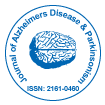Unsere Gruppe organisiert über 3000 globale Konferenzreihen Jährliche Veranstaltungen in den USA, Europa und anderen Ländern. Asien mit Unterstützung von 1000 weiteren wissenschaftlichen Gesellschaften und veröffentlicht über 700 Open Access Zeitschriften, die über 50.000 bedeutende Persönlichkeiten und renommierte Wissenschaftler als Redaktionsmitglieder enthalten.
Open-Access-Zeitschriften gewinnen mehr Leser und Zitierungen
700 Zeitschriften und 15.000.000 Leser Jede Zeitschrift erhält mehr als 25.000 Leser
Indiziert in
- Index Copernicus
- Google Scholar
- Sherpa Romeo
- Öffnen Sie das J-Tor
- Genamics JournalSeek
- Akademische Schlüssel
- JournalTOCs
- Nationale Wissensinfrastruktur Chinas (CNKI)
- Elektronische Zeitschriftenbibliothek
- RefSeek
- Hamdard-Universität
- EBSCO AZ
- OCLC – WorldCat
- SWB Online-Katalog
- Virtuelle Bibliothek für Biologie (vifabio)
- Publons
- Genfer Stiftung für medizinische Ausbildung und Forschung
- Euro-Pub
- ICMJE
Nützliche Links
Open-Access-Zeitschriften
Teile diese Seite
Abstrakt
Neuroinflammation in Preclinical Alzheimer's Disease: A Review of Current Evidence
Tamlyn J Watermeyer, Vanessa Raymont and Karen Ritchie
The pathology of sporadic Alzheimer’s disease (AD) may be present at mid-life and precede the prodromal and clinical dementia syndromes associated with the disorder by decades. Few successful therapeutic treatments exist and, as a result, attention is turning to the preclinical stages of the disease for the development of future intervention strategies. The success of such strategies will rely on well-defined biomarkers of preclinical disease to identify and monitor changes earlier in the disease course. Here, we consider whether immune function changes are potentially useful markers of preclinical disease. We have selected studies spanning epidemiological, animal, clinical and imaging research pertaining to the earliest stages of AD pathogenesis, as well as studies of non-demented adults at high AD risk. We examine changes in inflammatory markers, alongside changes in established biomarkers, to highlight their suitability as disease indicators across preclinical and prodromal stages. We conclude that further work surrounding this topic is required, calling for larger prospective epidemiological studies of preclinical disease that incorporate serial assessment designs with a wider range of inflammatory mediators. We anticipate that future benefits of work in this area include improved disease detection and modification, as well as diagnostic accuracy of trial participants, leading to more cost-effective observation and intervention studies.
Zeitschriften nach Themen
- Allgemeine Wissenschaft
- Biochemie
- Chemie
- Genetik und Molekularbiologie
- Geologie und Geowissenschaften
- Immunologie und Mikrobiologie
- Klinische Wissenschaften
- Krankenpflege und Gesundheitsfürsorge
- Landwirtschaft und Aquakultur
- Lebensmittel & Ernährung
- Maschinenbau
- Materialwissenschaften
- Medizinische Wissenschaften
- Pharmazeutische Wissenschaften
- Physik
- Sozial- und Politikwissenschaften
- Umweltwissenschaften
- Veterinärwissenschaften
Klinische und medizinische Fachzeitschriften
- Anästhesiologie
- Augenheilkunde
- Betrieb
- Dermatologie
- Diabetes und Endokrinologie
- Gastroenterologie
- Genetik
- Gesundheitspflege
- Immunologie
- Infektionskrankheiten
- Kardiologie
- Klinische Forschung
- Medizin
- Mikrobiologie
- Molekularbiologie
- Neurologie
- Onkologie
- Pädiatrie
- Pathologie
- Pflege
- Toxikologie
- Zahnheilkunde

 English
English  Spanish
Spanish  Chinese
Chinese  Russian
Russian  French
French  Japanese
Japanese  Portuguese
Portuguese  Hindi
Hindi